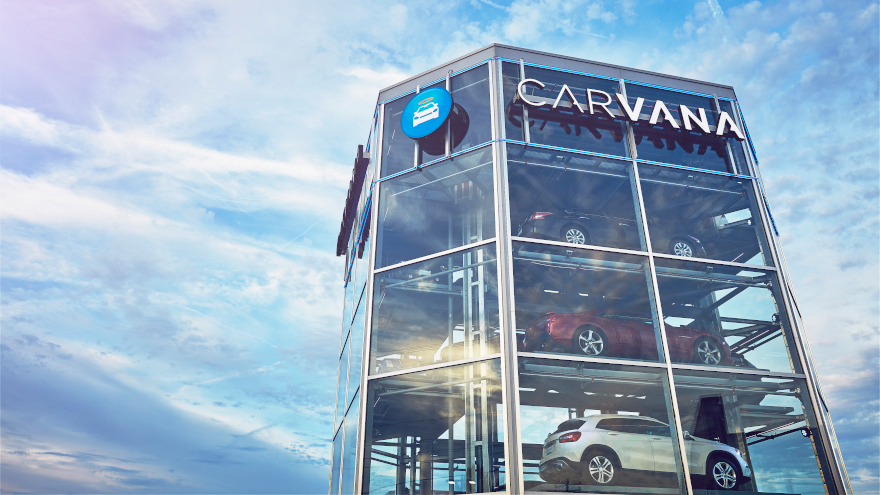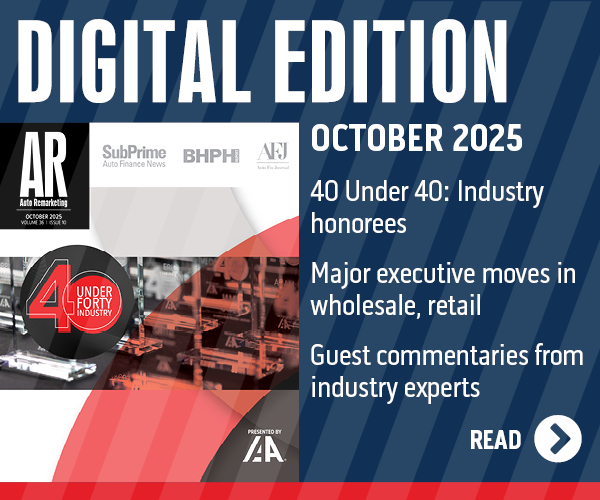4 reasons Carvana decided to buy ADESA auctions

Carvana's Nashville, Tenn., vending machine. Photo courtesy of Carvana/BusinessWire.
By subscribing, you agree to receive communications from Auto Remarketing and our partners in accordance with our Privacy Policy. We may share your information with select partners and sponsors who may contact you about their products and services. You may unsubscribe at any time.
Carvana’s agreement to buy ADESA’s U.S. auction locations for $2.2 billion is arguably the most landscape-shifting move to impact the wholesale auto industry in decades, if not ever.
One might ask, though, why would a digital used-car retailer buy such a physical asset-heavy business as a bricks-and-mortar auto auction chain — especially at a time when the wholesale car business is moving further online?
What’s in it for Carvana?
Founder and chief executive officer Ernie Garcia explained why during Carvana’s quarterly investors call Thursday, shortly after the deal was announced.
He boiled it down to four justifications, which are outlined below.
First, Garcia said, acquiring ADESA “solidifies our path to become the largest and most profitable automotive retailer.”
Subscribe to Auto Remarketing to stay informed and stay ahead.
By subscribing, you agree to receive communications from Auto Remarketing and our partners in accordance with our Privacy Policy. We may share your information with select partners and sponsors who may contact you about their products and services. You may unsubscribe at any time.
Second, bringing ADESA’s U.S. auction locations into the fold gives Carvana a network of inspection centers that will add roughly 2 million units per year to the retailer’s production capacity, once the planned improvements to those locations are fully developed.
“They’ve got an unbelievable footprint of 56 locations around the country, in great locations that are very close to our customers. You add up those locations, it's over 4,000 acres,” Garcia said. “For perspective, it you add up all of our inspection centers today, it's probably close to around 1,000 acres. So, a really meaningful increase in (the kind of) physical infrastructure that we will have access to.
“That, obviously, means incredible things for what we can do from a reconditioning perspective, both in terms of volume, where we expect to get 2 million units plus incrementally out of there versus our existing capacity, once we fully ramp it up,” he said.
Carvana chief financial offer Mark Jenkins explained during the call that the $3.275 billion in committed debt financing from JPMorgan Chase Bank N.A. and Citi will fund the $2.2 billion purchase price, but also an additional $1 billion in improvements across the 56 U.S. ADESA auction sites.
He also added some additional context around Carvana's progress in inspection/reconditioning centers, thus far.
“Upon the development of these 56 sites, we are expected to unlock approximately 2 million units of incremental annual production capacity at full utilization. This year, we made significant progress at scaling our vehicle production capacity. In 2021, we added three inspection and reconditioning centers, increasing our total IRC count to 14,” Jenkins said.
“Following year-end, we also opened our 15th IRC near Cincinnati, Ohio, bringing our total capacity at full utilization to approximately 880,000 units as of February 24,” he said. “We remain on track to open six additions IRCs by the end of 2022. We plan to open five of these on schedule, leading to more than 1.2 million units of annual capacity at full utilization at year-end. And with our acquistion of ADESA US, we are currently evaluating our preferred timeline on opening the sixth.”
Going back to the four pieces of rationale, Garcia said the third benefit is the improvements to Carvana’s logistics network.
With the addition of ADESA’s auctions to its footprint, Carvana will have inspection centers within 200 miles of 94% of the U.S. population, he said.
Currently, the company has inspection center within 200 miles of 56% of the population.
“Demonstrating the quality of these locations, we will move from being within 50 miles of 16% of the U.S. population to being with 50 miles of 58% of the population,” Garcia said. “This will reduce shipping times to our customers nationwide and lays the foundation for eventually offering same-day delivery to many of our customers.”
He would later point out that cars delivered from inspection centers within 200 miles of a customer tend to have unit economics that are approximately $750 stronger due to lower inbound and delivery costs, as well as higher conversion rates that lower the expense of customer acquisition.
As for the fourth reason for the purchase, Garcia said: “It significantly increases our auction capabilities and kickstarts or deepens our relationships with many large and important players in the automotive industry. We look forward to working with our new customers, to creatively finding new and interesting ways to work together and to valuing them in the same way we have always valued all of our customers.”
He later added this context, shedding some light on what role Carvana eventually wants to play in the used-car market at large.
“We've oftentimes used this mental model of the entire used market is basically a big machine with lots of players that helps customers trade cars with one another. And there's all kinds of players inside that system,” he said.
“There's dealers, there's finance companies. Auctions are a really big player inside that system … When we talk about vertical integration, what we generally mean is, we want to be as big a part of that system as we can be so that we can cut out as much expense and difficulty as possible for customers that are trading cars. And we think working together with ADESA is really interesting strategically for that reason as well.”
Even given all of the above, why buy all of these locations instead of building inspection centers from the ground up?
Garcia walked investors through that on the call, as well.
He said getting the same kind of additional production capacity that ADESA’s locations allow for would require Carvana to build 30 inspection centers.
“And we would expect that cost to be pretty high; we would especially expect it to be pretty high when you look at the locations that we're picking up through this ADESA acquisition,” Garcia said.
“They've got many locations on the West Coast. They've got many locations in the Northeast, in areas of the country that are very expensive in dollars but also very expensive in time, in terms of how long it takes to find the locations and get them zoned and get them built out and get them operational,” he said.
The cost structure, in terms of dollars, of building is similar to buying. But buying the ADESA locations also comes with logistics benefits, additional assets and opportunities. And they’re in locales, “a little bit closer to customers, a little bit closer to employment than many of the locations that we would build out today, if we were going out and trying to find farmland, for example, to build a greenfield,” Garcia explained.


